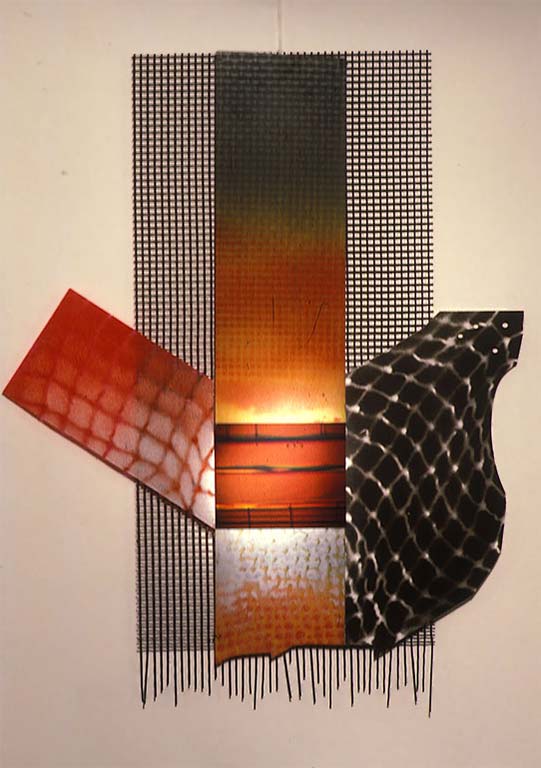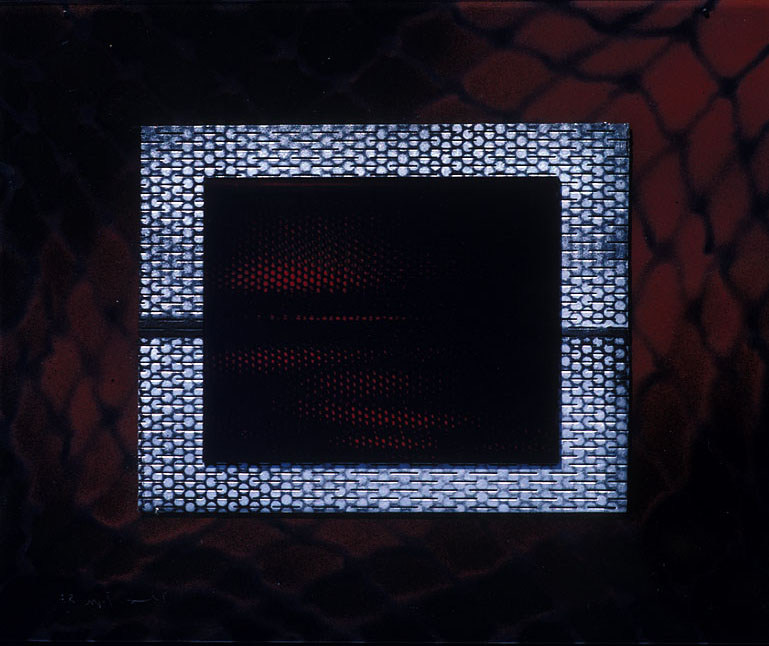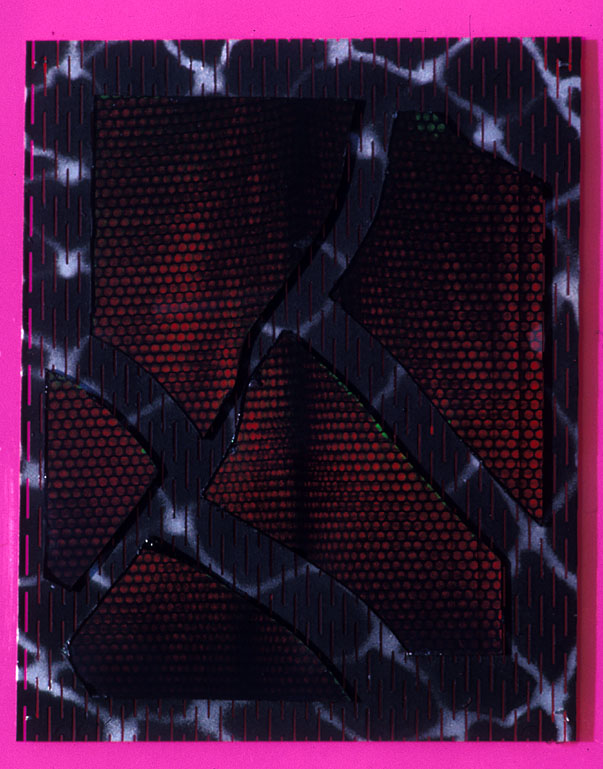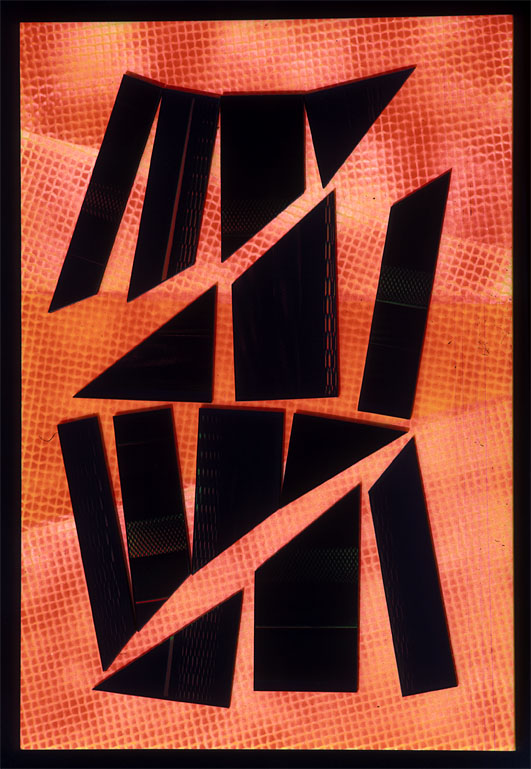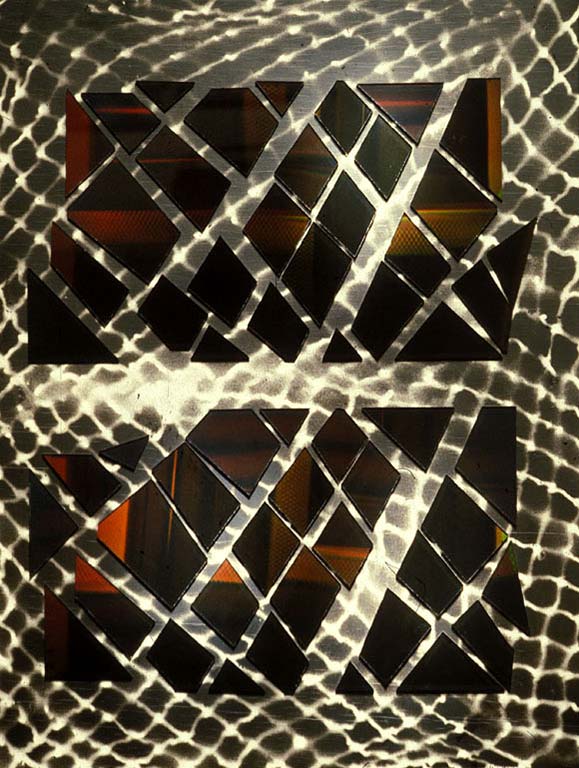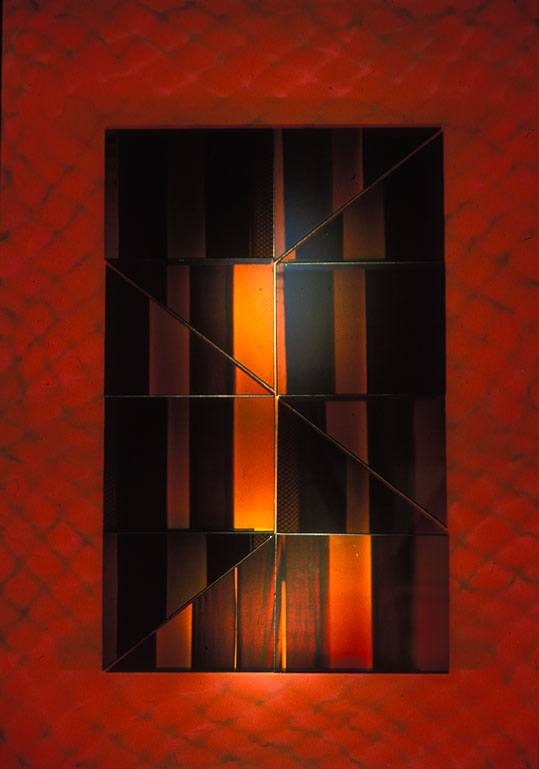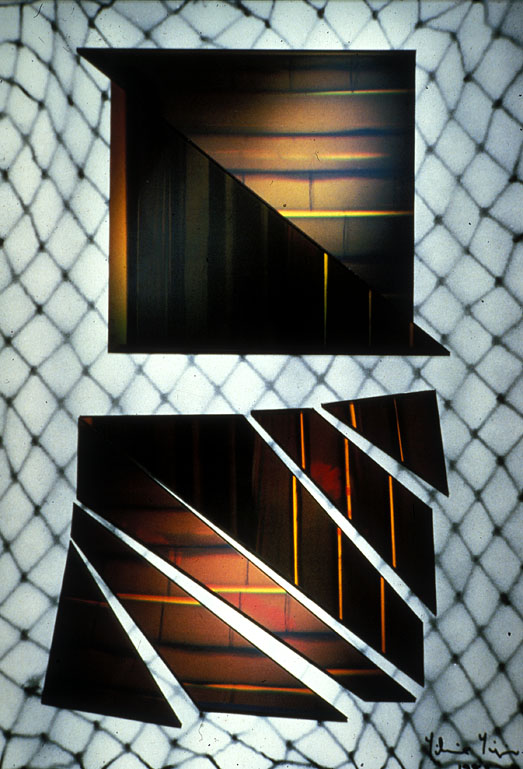The Illusory Web
1982
painted wood with cut up holograms
variable dimensions
“Liliane Lijn, use the properties of holography as a natural progression from her work in kinetics and light. … Elements in her work produce images when they react with the prevailing light – and with the observer’s viewpoint. She comments that she is ‘mainly exploring an area that could be called receptive: the reception of light, its reflection, refraction, and eventual re-emission.’ In early experiments she tried to make a crystal emit bright flashes of light. Her aim was to temporarily blind observers, so that on regaining their sight they would not be so willing to take seeing for granted, and would look more carefully at other work on display. In essence she was producing the equivalent of a pulsed laser, which she realized several months later while reading about masers, lasers and holography. Attracted by the principles of holography, she used lasers and interference patterns in her work, but it was not until 1982 that she actually made a hologram.
The opportunity came when she was one of four Arts Council-sponsored artists to participate in a holography workshop held at Goldsmith’s College in London. ‘The first thing I did when I came out of the workshop was to accidentally break one of the holograms. I liked the result.’ Since this first lucky mishap, she has been deliberately cutting up plates and carefully repositioning the pieces. Her subject matter of fine wire mesh curved to create moire patterns continues a theme that she began before she discovered holography, and the mutilation of the plates reflects her dislike of presenting images in depth. In each piece of the broken hologram the reconstructed image protrudes from the plate which has been cut into small pieces, each dominating and confusing the picture. Looking at the hologram, the cluster of unfamiliar images is just too much for the brain to handle, and instead of an image in depth, we see a flat luminous surface that reacts kinetically as we move in front of it.” (Andrew Pepper, 1983)
Photographs by Liliane Lijn
